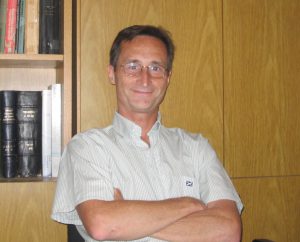
Departamento de Electrotecnia
Facultad de Ingeniería
Universidad Nacional de La Plata
Casilla de correo 91, La Plata (1900)
Buenos Aires, Argentina
Tel: +54 (0221) 423-6690 (Interno 3559)
Email: mayosky@ing.unlp.edu.ar
Formación Académica:
- Ingeniero en Telecomunicaiones, Universidad Nacional de La Plata, Argentina, 1983
- Doctor en Informática, Universidad Autónoma de Barcelona, España, 1990
Posición actual:
- Profesor Titular, Facultad de Ingeniería, Universidad Nacional de La Plata
- Investigador Superior, CICpBA
Áreas de Investigación:
- Control Automático
- Instrumentación Electrónica
